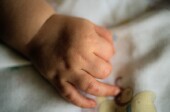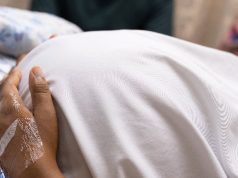New technology may help take guesswork out of high-risk pregnancy
WEDNESDAY, Oct. 7, 2015 (HealthDay News) — For the first time, three-dimensional (3D) printing technology has been used in utero to diagnose facial deformity and severity of airway risk with a newborn, according to a report published online Oct. 5 in Pediatrics.
The authors describe the case of an expectant mother, age 22, at 30 weeks’ gestation. The mother underwent an ultrasound, but the imaging did not provide enough information because of the way the fetus was positioned. She then underwent magnetic resonance imaging (MRI), but again the doctors couldn’t be sure if the airways would be clear after birth.
A subsequent, specialized MRI captured more data that the University of Michigan doctors could use to build a 3D model. They then printed a model of the fetal face with a 3D printer. The model predicted a cleft lip and palate deformity — without airway obstruction. The baby’s delivery and discharge proceeded uneventfully, according to the report.
“This case demonstrates that 3D modeling may improve prenatal evaluation of complex patient-specific fetal anatomy and facilitate the multidisciplinary approach to perinatal management of complex airway anomalies,” the authors conclude.
Two authors have patents pending for 3D printed medical devices (surgically implanted devices and external scaffolds).
Abstract
Full Text (subscription or payment may be required)
Copyright © 2015 HealthDay. All rights reserved.








